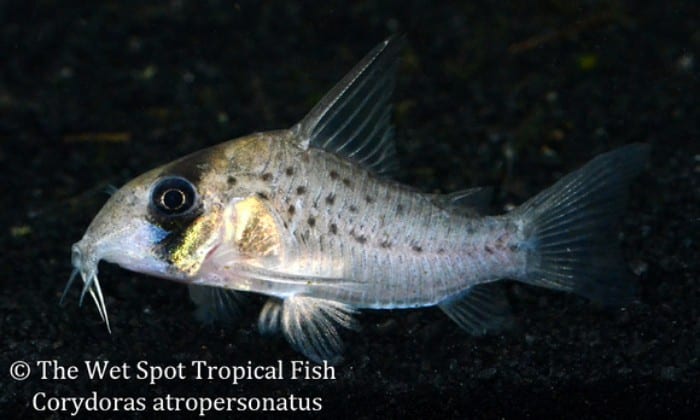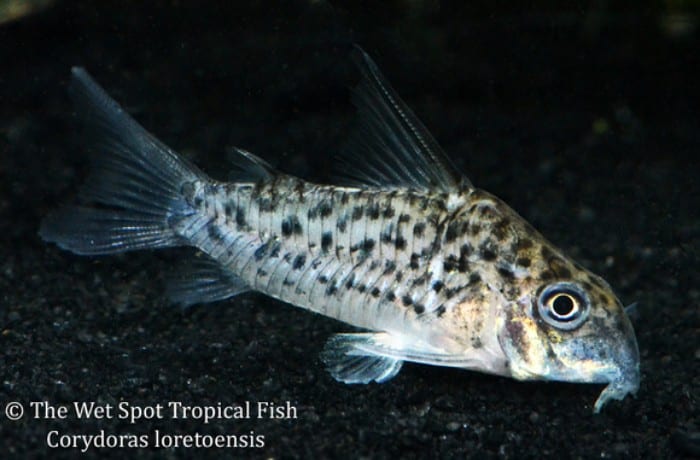Fringe Benefits
Fringe Benefits
Fringe (n): the outer, marginal, or extreme part of an area, group, or sphere of activity/ the unconventional. In a world where anyone can have a voice, living on the fringe has become romanticized; where once people were looked down on for going against the grain, being unique is more sought after than ever. It is in this light we can find kinship with a popular group of aquarium fish. Where catfish once predominantly came out only at night, Corydoras ventured into the daylight, and moved further from “mainstream” into marginal zones of freshwater habitat. Not only are “cories” some of nature’s original hipsters (with mustaches to boot), they are widely beloved for the peaceful temperaments, hardiness to a wide range of water conditions, and their entertaining behaviors.
Easy to care for, all Corydoras forage for their food by digging in substrate with sensitive barbels. Tanks, therefore, require soft sandy substrate to protect their whiskers. Other tank requirements include plentiful shade provided by furnishings and floating plants. Hiding refuges like caves, rocks, driftwood, and PVC pipe are also highly appreciated. Seeking tasty morsels like aquatic invertebrates in nature, in captivity, they can be fed sinking dried foods with regular supplementation of varied live and frozen fare. Peaceful and gregarious, cories should be kept in conspecific groups of 6 or more, and do extremely well in community tanks. Potential roomies include small characins, cyprinids, anabantoids, dwarf cichlids and other peaceful catfish. Incredibly tolerant to water conditions, they have the capability to gulp atmospheric oxygen, and can be seen doing so at the surface when it’s time for a water change. Don’t, however, put away your chemistry sets yet! Cories are sensitive to high nitrate levels which cause their barbels to degrade. Cories are happiest and healthiest in waters with temperatures between 68 and 79°F, pH of 5.5 to 7.5, and hardness between 36 and 179 ppm.
With an overwhelming 180 described species in the genus, we’ll highlight a few that really stand out from the crowd. At The Wet Spot, we can’t get enough of Corydoras habrosus, Corydoras atropersonatus, and Corydoras loretoensis.
Scientific NameCorydoras habrosus
Common NameSalt and Pepper Cory
Temperature / pH68 to 79°F / 5.5 to 7.5 pH
Native LocationRio Orinoco
Preferred DietSinking foods
Soaring around submerged plant life of the left bank tributaries of the Rio Orinoco basin is C. hastatus. Scientific name translating to “helmet skin” and “graceful” all at once, these swimmers embody both sentiments. Reaching 1.25 inches in length, and sport the trademark cory bony plates and whisker-like barbels. Known more commonly as “salt and pepper cories”, they sport black speckles on light fins, a dark lateral stripe, and a dark extra-mustache-like band above their mouths.
Scientific NameCorydoras atropersonatus
Common NameFairy Cory
Temperature / pH68 to 79°F / 5.5 to 7.5 pH
Native LocationPeru
Preferred DietSinking foods
Another tough, yet seemingly delicate specimen, C. atropersonatus is also known as the “Fairy Cory”. Almost translucently white, these cories have tiny black polka-dotted bodies, and a black band over their eyes, reminiscent of the classiest masquerade balls. Found naturally occurring in the Rio Nanay system of Peru, these ethereal creatures are quite comfortable in captivity, seeming to go with the flow.
Scientific NameCorydoras loretoensis
Common NameLoreto Cory
Temperature / pH68 to 79°F / 5.5 to 7.5 pH
Native LocationPeru
Preferred DietSinking foods
Shimmering through the upper Amazon of Peru, C. loretoensis, is a slight 2 inches in length with golden and brown prints. In their prides, these leopard-like cories are truly a sight to behold.
Be inspired to be different, go against the grain, swim upstream, march to the beat of your own drummer…and all such platitudes…but when you look into your tank to see your cories doing their thing, ask yourself if you are living up to your potential.


